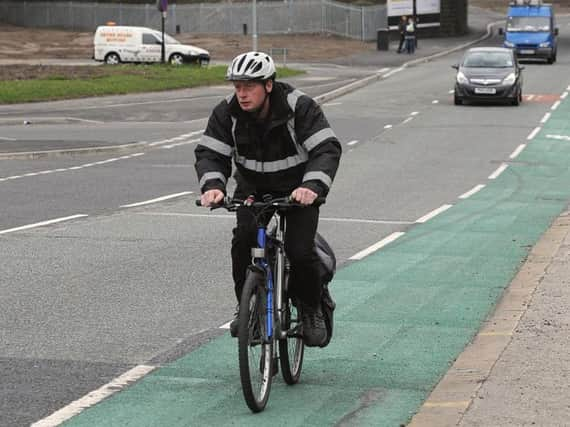Borough residents not taking steps to boost health


The concerning data, released this week by the Department for Transport, has revealed the number of borough residents choosing to adopt sedentary lifestyles.
Other news: Double killer to be free again
Figures covered a vast spectrum, in an attempt to create a picture of how many people are walking or cycling on a regular basis across the UK.
Advertisement
Hide AdAdvertisement
Hide AdWigan borough performed worse than the average borough, with only 74.6 per cent of people saying that they walked anywhere once a month. This was lower than the UK average of 78.4.
Perhaps more worryingly, less than a third of people in Wigan (29.5 per cent) walk anywhere five times a week, also less than the national average of 32.
These figures were slightly more promising when cycling was thrown into the mix, with 30.7 per cent of Wiganers either walking or cycling up to five times a week, which still falls well below the national average of 35.2 per cent.
Coun David Molyneux, council leader, said: “We are working closely with partners across Greater Manchester to deliver a number of schemes to encourage more people to walk and cycle.
Advertisement
Hide AdAdvertisement
Hide Ad“We hope these schemes will reduce air quality and congestion and ultimately improve the health and wellbeing of our residents.
“The cycle city ambition programme, which is being led by TfGM, is now complete at Robin Park Road, and is due to be complete at the Saddle Junction and Wallgate in early December this year.
“Once fully complete the scheme will allow people to cycle into and around the town centre with ease. We have also secured further funding from the Growth Deal programme, which we will use to expand and build on the success of this programme.
“The Standish Mineral Line upgrade works were completed earlier this month, giving residents an alternative and sustainable way to travel into the centre of Standish. We are also part of the Greater Manchester Strategic Cycling and Walking programme which proposes to create 157 miles of new cycling and walking routes, and create the UK’s biggest network for people travelling by bike or on foot.
Advertisement
Hide AdAdvertisement
Hide Ad“As well as the new routes, 16 miles of Dutch-style segregated cycling lanes and 183 new and upgraded crossing points are being suggested to better connect every community in the borough and to make cycling and walking a real alternative to the car.
“We have already put forward a number of schemes to the GM Mayor’s £160m Challenge Fund to enable us to seek funding to help us further improve the cycling and walking network across the borough.”
Earlier this year a similar Public Health study shone a light on the extent of Wigan’s health-related issues, revealing that the borough is the sixth most overweight in the country.
The study, which was released back in March, shows that more than double the amount of Wiganers are being admitted to hospital with a primary or secondary diagnosis of obesity. In England there were 1,159 per 100,000 people seeking hospital care for obesity in 2016/17 yet in the same period 2,361 Wiganers per 100,000 were seen for the same problems.
Advertisement
Hide AdAdvertisement
Hide AdWigan’s public health bosses have already outlined the measures being implemented to get children interested in walking from an early age, in the hope that they can change the borough’s increasingly inactive lifestyle choices.
In a previous statement, Professor Kate Ardern, director for public health, said: “There are now more than 9,000 children in 60 primary schools and 12 early years settings participating in the Daily Mile and we are continuing to work with our early years settings to introduce the Daily Toddle. Both these schemes are having a huge impact on our schools and ensuring children are getting the daily physical exercise they need.”